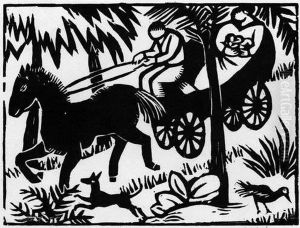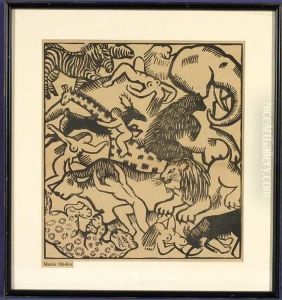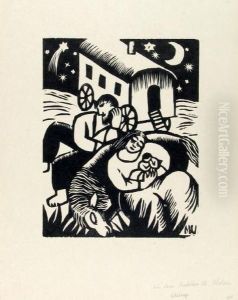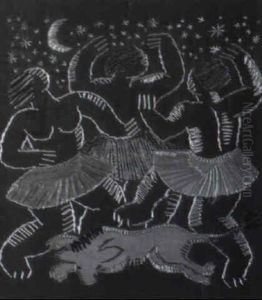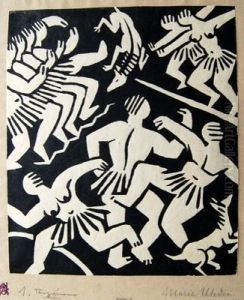Maria Uhden Paintings
Maria Uhden was a German expressionist painter and printmaker born on October 17, 1892, in Braunschweig, Germany. Her artistic journey began at a young age, leading her to study at the Women's Academy of the Munich Artists' Association and later at the Independent School of Art in Munich. Uhden's work was profoundly influenced by the German Expressionist movement, a trend that sought to express emotional experience rather than physical reality. This influence is evident in her bold use of color, vigorous brushwork, and often distorted forms that convey intense emotions and psychological states.
In 1913, Uhden's career took a significant turn when she became a founding member of the Munich New Secession, a group that aimed to challenge the conventional norms of art and promote avant-garde styles. Her involvement with this group placed her at the heart of the German avant-garde movement, allowing her to collaborate with some of the most innovative artists of her time. Despite her promising career, Uhden's life was cut short by the Spanish flu pandemic; she died on August 17, 1918, at the age of 25.
Throughout her brief career, Maria Uhden's work was characterized by a dynamic and expressive style. She explored various subjects, including portraits, landscapes, and urban scenes, all marked by her distinctive expressionist approach. Her contributions to the German Expressionist movement, although limited by her short life, were significant, and her works continue to be celebrated for their emotional depth and artistic innovation. Uhden's legacy is a testament to her talent and her role in the early 20th-century avant-garde movements, marking her as a significant figure in the history of German art.
